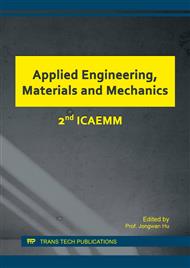p.326
p.331
p.337
p.349
p.354
p.360
p.373
p.378
p.383
Single Photon Counting Discrimination Voltage Software
Abstract:
Because the output signals of photon detectors are scattered under weak light, the single photon counting method uses pulse discrimination technique and digital counting technique to identify and count weak signals. Compared with analog recording technique, the single photon counting technique has the advantages of high signal-to-noise ratio and good anti drift performance. Discrimination voltage is an important part of single photon counting, which will greatly affect the signal to noise ratio (SNR). The selected process of discrimination voltage is very complicated, especially the number of photomultiplier tube spectral analysis system [1], discrimination voltage selection process more time-consuming. This paper presents a software for automatically searching voltage discrimination. The software can automatically measure the discrimination voltage of a plurality of photomultiplier tubes, greatly improve the efficiency and accuracy of screening voltage selection, and verify the effectiveness of the screening voltage software by calculating the signal-to-noise ratio.
Info:
Periodical:
Pages:
354-359
Citation:
Online since:
October 2017
Authors:
Keywords:
Price:
Сopyright:
© 2017 Trans Tech Publications Ltd. All Rights Reserved
Share:
Citation:


